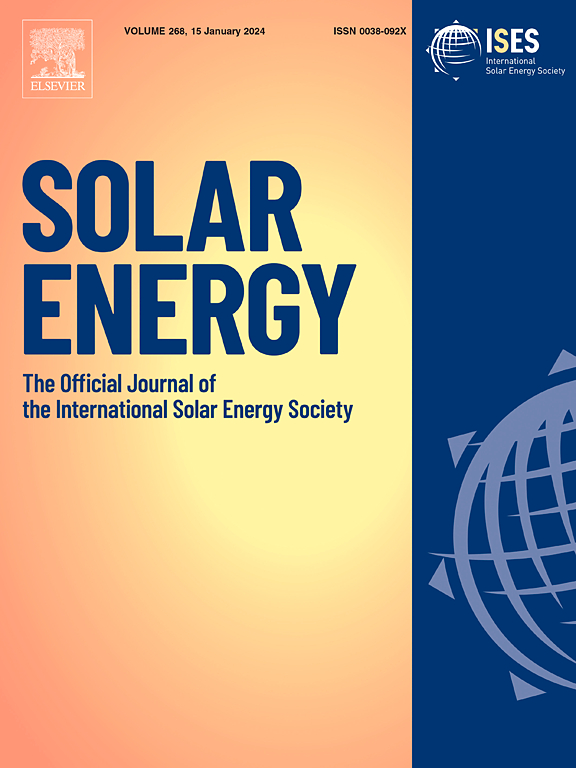利用无金属生物相容性氨基酸功能化石墨氮化碳和统计模型,利用太阳能光降解废水中的偶氮染料
IF 6
2区 工程技术
Q2 ENERGY & FUELS
引用次数: 0
摘要
偶氮染料因其致癌性和高度抗自降解性而引人注目。因此,为了解决染料废水问题,本文采用水热法合成了一种新型的太阳光响应金属游离氨基酸功能化石墨氮化碳光催化剂(CNM)。石墨氮化碳大多掺杂金属和金属氧化物以增强其光催化活性,这可能会引入毒性,或者这些材料可能降解成有害的副产物。相反,氨基酸功能化保持绿色和安全的轮廓。氨基酸是可生物降解的和无毒的,使这种方法理想的光催化应用。经过扩展共轭的功能化后,带隙从CN中的2.7 eV减小到CNM中的2.62 eV,从而有效地抑制了载流子复合。实验批研究表明,CNM在25 min和35 min内分别有效去除20 mg/L(96.6% %)和15 mg/L(93.8 %)的刚果红(CR)和阿鲁拉红(AR)染料,将其转化为无害化产物,总有机碳(TOC)为65.6% %和58.5% %。从动力学研究中得到的数据很好地符合伪一阶速率方程。在相同的最佳条件下,散装CN对CR和AR染料的去除率分别为48% %和43% %。使用Box-Behnken设计模型的方差分析对染料降解进行统计分析,揭示了与批量实验研究中观察到的参数密切匹配的参数。有关自由基清除的研究表明,空穴(h+)和羟基自由基(OH•)是降解的主要种类。本文章由计算机程序翻译,如有差异,请以英文原文为准。

Harnessing solar light to photodegrade azo dyes from wastewater by metal free biocompatible amino acid functionalized graphitic carbon nitride and statistical modelling
Azo dyes are notable for their carcinogenic nature and are highly resistant to self degradation. Consequently, to address dye wastewater issues, a novel solar light responsive metal free amino acid functionalized graphitic carbon nitride photocatalyst (CNM) has been synthesized hydrothermally. Graphitic carbon nitride mostly doped with metal and metal oxides to enhance its photocatalytic activity, which may introduce toxicity, or these materials may degrade into harmful by-products. On the contrary, amino acid functionalization maintains a green and safe profile. Amino acids are biodegradable and non-toxic, making this method ideal for photocatalytic application. After functionalization due to extended conjugation the band gap reduces from 2.7 eV in CN to 2.62 eV in CNM which in turn effectively inhibits charge carrier recombination. Experimental batch studies demonstrated that CNM effectively removes 20 mg/L (96.6 %) and 15 mg/L (93.8 %) of Congo Red (CR) and Allura Red (AR) dyes from an aqueous solution within 25 and 35 min respectively, converting them into harmless products giving TOC (Total organic carbon) of 65.6 % and 58.5 %. Data obtained from kinetic studies fits well in pseudo-first-order rate equation. Bulk CN showed only 48 % and 43 % removal efficiency for CR and AR dyes under identical optimal conditions. Statistical analysis of dye degradation, using ANOVA with the Box-Behnken design model, revealed parameters that closely match those observed under the batch experimental studies. Studies involving radical scavenging have shown that holes (h+) and hydroxyl radicals (OH•) are the major species responsible for degradation.
求助全文
通过发布文献求助,成功后即可免费获取论文全文。
去求助
来源期刊

Solar Energy
工程技术-能源与燃料
CiteScore
13.90
自引率
9.00%
发文量
0
审稿时长
47 days
期刊介绍:
Solar Energy welcomes manuscripts presenting information not previously published in journals on any aspect of solar energy research, development, application, measurement or policy. The term "solar energy" in this context includes the indirect uses such as wind energy and biomass
 求助内容:
求助内容: 应助结果提醒方式:
应助结果提醒方式:


